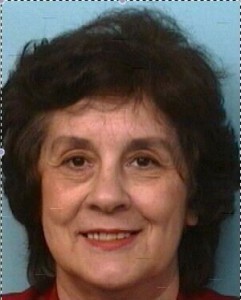
Gail Spangenberg
President, NCAL
Professional Development is a long-standing need in the field of Adult Education and Workforce Skills. Some recent activities sparked a renewed public discussion of that reality. First, in August 2015, NCAL hosted Moving PD Closer to the Top, a blog in which several invited national leaders spoke in specific terms about highest priority needs in PD. (Link HERE.)
A month later, in September 2015, Johan Uvin, Asst. Secretary for Career, Technical, and Adult Education, and Gail Spangenberg, NCAL’s president, co-authored a follow-up OCTAE blog, Throwing Down the Gauntlet for Professional Development. (Link HERE.)
Then, at COABE’s April 2016 conference in Dallas, Mary Ann Corley (Principal Associate of Adult Learning Partners, LLC, and recently retired Principal Researcher, American Institutes of Research) picked up the gauntlet by organizing a professional development pre-conference panel on the topic. The AALPD (Association of Adult Literacy Professional Developers) sponsored the panel. Dr. Corley moderated it and participated as a panelist along with Jeff Carter, Sandy Crist, Kim Harris, Rebecca Wagner, and Randy Whitfield. The conference was introduced by a 15-minute You Tube video speech by Mr. Uvin, with the discussion organized according to the six priority topics of the OCTAE blog. (To view the video, link HERE.)
After the COABE conference, NCAL invited Dr. Corley to extend the COABE discussion through this third PD blog. With the help of a few conference participants, we are pleased to provide below summaries of key points made in the various topical discussions. [Note: In cooperation with AALPD, NCAL will publish a full paper about the PD session in due course.] The ideas and suggestions generated at the pre-conference were a good start, but many more voices should be heard, not just with respect to Adult Education generally but also in such specific areas as distance learning and technology, corrections education, adult ESL & service to immigrants, and workplace skills.
We hope this blog will stimulate a broader discussion in local, state, and national forums around the country. Readers are also welcome to contribute questions, comments, and suggestions below. Further, in conjunction with this posting, Dr. Corley has cross-posted to several LINCS listservs, including evidence-based PD, reading and writing, career pathways, and college and career standards. To join one or more LINCS discussion groups, go to https://community.lincs.ed.gov/groups .
Randy Whitfield — President, Adult Education Training
& Principal Associate, Adult Learning Partners, LLC; retired
State Director of Adult Education, North Carolina
PRIORITY 1: CONSULT WITH THOSE WHO PROVIDE THE SERVICES
Adult educators need to be advocates for funding professional development by holding conversations at local, regional, and federal levels. We need to educate the groups with which we partner on the impact of PD on their agency’s goals/outcomes. To achieve our goals, we need to become familiar with and understand the language (jargon) of our partners, and help them understand our language (jargon). We need to do better marketing. To this end, we might better frame professional development in terms of return on investment (ROI) and/or consider using the term “talent management” or “training” instead of “PD.” One example of excellent marketing is in Illinois’ message: “We are the education partner.” We should focus on what kind of PD other agencies/partners need and how we can help.
Adult educators also need to examine marketing strategies for retaining students and teachers. For example, sometimes when lower-level students enroll in or drop out of our programs it may have to do with high school completion issues rather than lack of basic skills needed for everyday life. It is important for program planners and teachers to differentiate. Many students also need more structure than open-entry/open-exit programs allow. They may need classes that have enough intensity and duration for them to make progress, or they may need teachers to teach in a traditional sense instead of giving them independent work in books or on computers.
Like students, teachers also often leave Adult Education and for many different reasons. Program managers need to ascertain those reasons. Some typically given are the need for full-time work with benefits, the need to make a family-sustaining salary, or paid professional development time. Some of the ways to avoid teacher drop-out are to: (1) Provide opportunities for teachers to develop before they are actually in the classroom; (2) Increase opportunities for real adult education careers with full-time jobs that have benefits and family-sustaining salaries; (3) Develop more full-time positions; (4) Institute appropriate pay scales for teaching and prep time, provide time for PD, and adequately compensate master teachers; (5) cover such PD attendance costs as hotels and mileage; (6) offer benefits for part-time teachers; and (7) establish programs in Adult Education that forgive loans to students who accept work in the field, similar to what is done in “Teach for America.”
PRIORITY 4: BUILD PROFESSIONAL DEVELOPMENT
EXPLICITLY INTO ADULT EDUCATION PLANNING
Adult education needs quality professional development opportunities to ensure the field has highly skilled teachers who can foster student successes that will, in turn, benefit all agencies and the state in general. Under WIOA, planning for professional development should be collaborative, ensuring that PD is for everyone, not just adult educators. The
key to successful PD lies in getting all partners in service provision and planning to collaborate. One way to achieve this is to host a “getting to know you” meeting with round-robin sharing (similar to speed dating) in which each program explains its mission and
its needs.
In providing PD in adult education, funding available through WIOA Title II is not enough. One solution might be to encourage several partner agencies to incorporate funding into their budgets, allotting a certain percentage for adult education PD. This can be accomplished through the development of a marketing and communications plan designed to help all stakeholders recognize their role in PD and to see how the development of effective teachers, in turn, will help them attain improved outcomes.
Mary Ann Corley — Adult Literacy/Professional Learning Specialist
& Principal Associate, Adult Learning Partners, LLC
Organizer and Moderator, COABE 2016 PD Pre-Conference Strand
PRIORITY 2: DEFINE WHAT CONSTITUTES
AN EFFECTIVE ADULT EDUCATION TEACHER
According to work done by the National Research Council in 2012, preparation of adult literacy instructors is currently widely varied, and, as professionals throughout the field know well, professional development opportunities are limited. Other recent reports emphasize the need for a more consistent and cohesive approach to professional learning for teachers with the aim of improving instruction for adult learners. To develop such an approach, we need to define what an effective adult education teacher is.
Although nationally developed professional standards and competencies for adult education teachers do exist, not all states use them. And few states have a process for certifying adult education teachers. Research indicates that inputs to teacher effectiveness (certification status, degree, subject area major) do not by themselves greatly impact student achievement (Rice, 2003; Roza & Miller, 2009). Outputs (teacher behaviors, attitudes, rapport with students) matter as much if not more, as measured by contributions to student growth and learning. Content expertise is certainly critically important—but it isn’t enough. Teachers working with adults need to be knowledgeable about adult learning theories as well as student-centered learning so that their teaching resonates with and involves adult learners as active participants. They need to be versed in differentiating instruction to meet the needs of a diverse learner population. They need to engage in effective lesson planning and employ formative assessment techniques and questioning strategies that lead to deeper learning. And they need an understanding of how to encourage students to become self-regulated learners, monitor their own learning, and adjust their strategies for ensuring success.
We know from K-12 research that the behavior of teachers significantly affects student achievement. But there is no comparable research that examines teacher effectiveness in adult education—and there is a great need for it. To address this priority, funding is a critical first step. We also need to more deeply examine the characteristics of effective teachers of adults as well as to develop guidelines for the professional development of adult literacy teachers.
David Rosen — President, Newsome Associates
PRIORITY 3: PROFESSIONAL DEVELOPMENT MODELS & APPROACHES
Strong funding and policy support is needed at all levels to identify, adopt, and adapt good professional development models and approaches. At the national level, we need support for many things — a strong national adult education professional development/training alliance; research, including, for example, the economic, social, and emotional factors related to practitioner longevity in the field; and continued support for professional development best practices and communities of practice, such as that provided through LINCS.
At the program level, administrators have an important leadership role in implementing a good environment for teacher professional development — for example, by developing and implementing sound criteria for hiring teachers, by evaluating the effectiveness of each teacher, and by including support in their program budgets for PD that they know will help their teachers grow, change practices, and ultimately, help students achieve greater learning gains.
State level ABE program administrators have an extremely important role in supporting adult basic skills professional development. They should take a systemic approach that:
- Provides sustained, in-depth professional development that offers teachers opportunities for practice and follow-up, and leads to measurable changes in their knowledge and skills, as well as demonstrated mastery of teaching strategies learned through the PD.
- Identifies, implements, and supports mentoring and peer coaching models, including follow-up to face-to-face or online PD, for example, Pennsylvania’s teacher coaching.
- Integrates technology into PD, including using blended learning to ensure follow-up to face-to-face PD–e.g., program administrators collaborating to design principles/best practices for blended models.
- Provides face-to-face, online, or blended adult basic skills new teacher orientation to the field with a peer support persons to guide and help teachers grow. PA, MA, VT, and CT are among many states that do this well.
- Supports shared learning through professional learning communities (PLCs) or Communities of Practice (CoPs) that might set up a process enabling teachers to observe each other teaching and provide peer coaching.
- Supports just-in-time learning, e.g., short, live webinars archived for asynchronous training, or the use of the reading research-based LINCS/Learner Web Tutor Ready website for reading tutors.
- Supports and trains program administrators in how to include effective PD activities in their budgets, requiring that a specific percentage be spent on key areas of PD need.
- Supports cluster meetings with teachers that are both interdisciplinary and by content area.
- Creates or expands adult basic education practitioner career pathways.
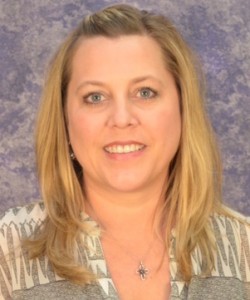
Marsha Taylor — Director, Arkansas Adult Learning Center
Priority 5: IMPROVE DATA COLLECTION
FOR PROFESSIONAL DEVELOPMENT
Practitioners agree that research is needed on the effects of professional development on both teacher behavior and student achievement. One idea is to conduct a longitudinal study on student perceptions, similar to the North Carolina study that explores the impact of professional development and references student outcomes (see HERE).
National and state data systems should be refined and expanded to include professional development variables. We should begin by conducting a survey of states to ascertain which states currently collect professional development variables in addition to student performance data and then we should develop guidelines to encourage and help states include these data elements. We ought to also develop a marketing plan that encourages all stakeholders to incorporate adult education professional development into the broader-purpose data systems that guide state economic development.
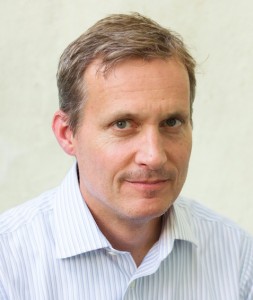
Jeff Carter – Executive Director, National Council
of State Directors of Adult Education (NCSDAE);
President, National Coalition for Literacy
PRIORITY 6: DEVELOP CLEARER COMMUNICATIONS
When we are engaged in budget advocacy in Washington or at the national, state, and local levels, we generally don’t get questions about professional development for teachers of adult learners. Nor do we get questions about equipment costs, building maintenance costs, the cost of developing curriculum and materials, or costs associated with supporting the profession of adult education in general—all of which comprise the institutional infrastructure of adult education. The questions we usually get relate to the numbers of additional students we might serve if we had more funding, with little consideration of whether we have or are creating conditions in which strong adult education institutions can emerge and thrive to serve those students.
Adult education has a fundamental communications problem. We haven’t successfully communicated what it actually takes (and costs!) to create institutional strength in our field. We need to do a better job showcasing examples of where such institutions have emerged. We should also understand more about how they emerged – e.g., the community resources used, the partnerships. And we should identify the policy levers available to support the replication of those successes. This will build a greater appreciation for the role of professional development in our field, and also show that our best institutions and programs tend to include solid professional development as one cornerstone of their success. We shouldn’t communicate our professional development needs solely in terms of teaching and other support services aimed at students.
Professionals throughout our field in every role, including state office staff and program administrators, need to get better at what they do if our goal is to build strong, stable adult learning programs.

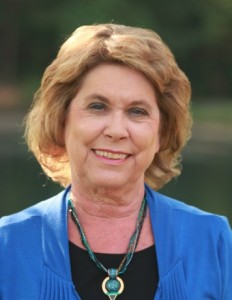
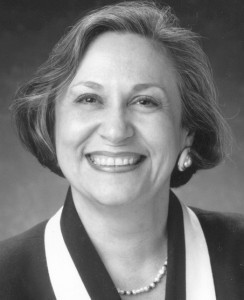
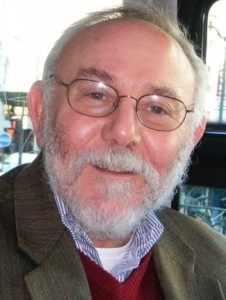
The priorities listed here certainly address PD challenges and the challenges faced by programs as they try to meet the needs of adult learners. Under Priority 1, Randy Whitfield says, “For example, sometimes when lower-level students enroll in or drop out of our programs it may have to do with high school completion issues rather than lack of basic skills needed for everyday life.” That is true. In addition, many programs in my region deal with the increasing use and distribution of drugs, starting with marijuana and leading into meth, which is readily available everywhere. This is not an issue that is often addressed in our discussions, but it is one that we would do well to recognize and include in PD in areas that face the challenge. For example, a mother who had been drug free for over a year and was only a few points away from passing her upcoming GED test disappeared. Turns out that during a family gathering, she took up meth again. Happens all of the time.
I also agree that students may need the structure of classes. What I hear from programs that maintain the open entry/exit policy is, “If students are told that they need to come back instead of being instantly served, we never see them again.” Programs whose funding depends on numbers of enrolled students fear losing students and eventual funding.
I am fairly new in adult education as an employee, but I can speak from a personal standpoint as a former high school drop out who took the GED. I so agree with Randi when she discusses Priority 1, ” they may need teachers to teach in a traditional sense instead of giving them independent work in books or on computers.” Having faced so many academic challenges in school already, I needed the traditional, small group instruction that took place in the classroom to build the academic foundation I would need in future college-level courses. AE teachers must be able to assess what their students need in terms of academic growth. I also agree with Mary Ann in Priority 2, where she states that outputs (teacher behaviors, attitudes, rapport with students) matter more. I needed the teachers in the remedial classes to exhibit behaviors that allowed me to put down my guard in classroom where I had already experienced much failure. Mary Ann, I also agree that teachers working with adults need to be knowledgeable about adult learning theories which will encourage adult learners to serve as active participants in their own learning. For years I had faded or “disappeared” in the academic background, not wanting to stand out for fear of ridicule when I struggled. When I mustered up courage to go back to school, and I started reviewing basic skills as low as 3rd or 4th grade, I needed my teachers to not only know how to teach me these foundations, but I also needed the encouragement and freedom to admit the areas I struggled. Content expertise is not enough if an instructor does not know how to relay the information.